The Cathedral city of Durham is an exciting place to visit. It’s brimming with culture, history, beautiful buildings and is home to two UNESCO World Heritage sites.
Head out of the city into County Durham and you don’t need to go far to discover fabulous museums, scenic countryside, castles and coastal heritage. Read on for the best things to do in County Durham both in the city of Durham itself and further afield.

This post may contain affiliate links, which means that we may earn a small commission for qualifying purchases. More info: disclosure.
Where is Durham?
Contents
County Durham is in the north east of England and sits around 21-miles south of Newcastle-upon-Tyne. It’s a gorgeous part of the country with loads to see and do and makes for a great weekend break or short getaway, especially if you take time to explore both the city and the coast and countryside of County Durham.
My visit to County Durham was hosted by This is Durham, however, all views and opinions are my own.
Things to do in the city of Durham
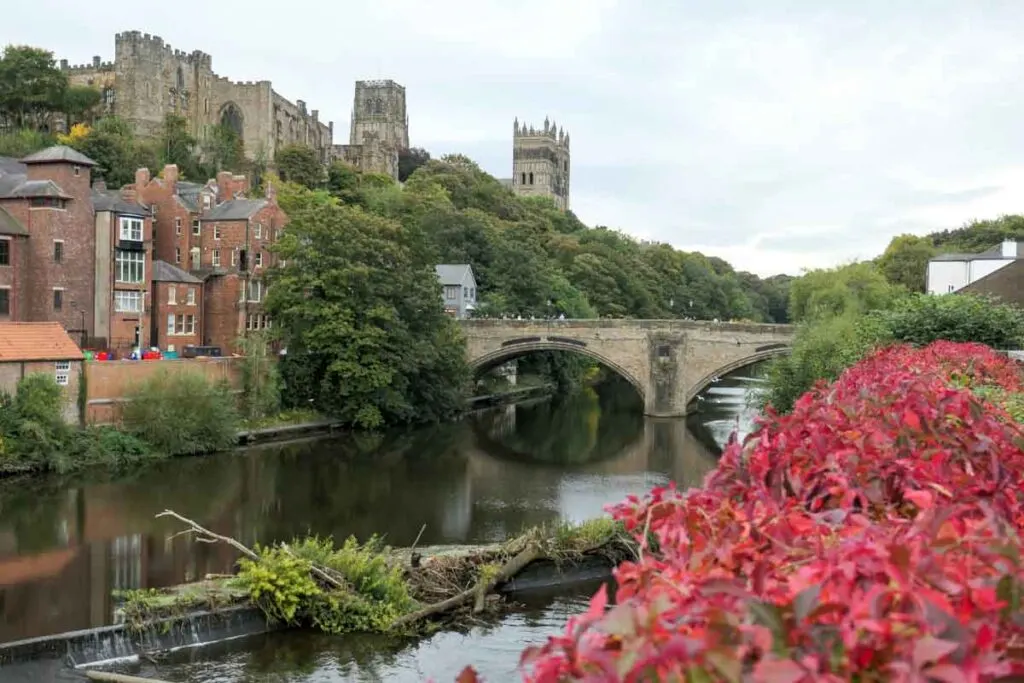
First, let’s take a look at what the City of Durham has to offer before heading out to explore the county of Durham. The city of Durham is a compact city and easy to get around on foot. You’ll find plenty of cafes, restaurants and shops. It’s a university city so the atmosphere is lively and busy.
Durham Cathedral

A visit to County Durham would not be complete without taking time to visit Durham Cathedral, a place of pilgrimage for almost a millennium. The imposing Cathedral is the seat of the Bishop of Durham and still holds daily services, with over 700,000 visitors in 2019 it’s top of my list of things to do in County Durham.

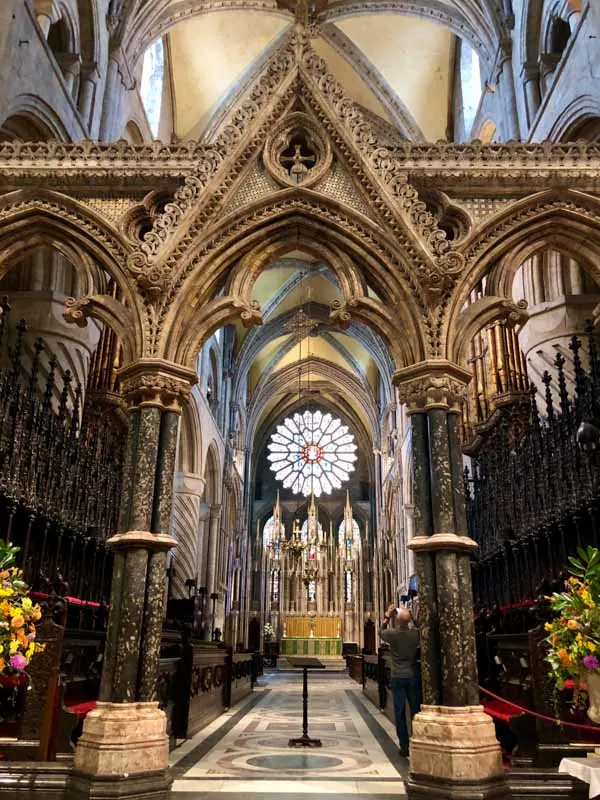
The Museum of the Moon installation by UK artist Luke Jerram was on at the Cathedral when we visited which was fabulous to see. The gently glowing moon is 7-metres in diameter and looks beautiful set against the stunning backdrop of Durham Cathedral which is spectacular to visit even without the moon.
The cathedral once formed part of Durham Castle and in 1986 they were jointly designated a UNESCO World Heritage Site.
Work began on Durham Cathedral in 1093. During the cathedral’s monastic period, which lasted until the mid 1500s, the original windows were filled with colourful stained glass designs, but most of these were destroyed during the 16th century Reformation. Most of the windows you’ll see when you visit Durham Cathedral were recreated in the Victorian era, including the beautiful Rose Window in the Chapel of the Nine Altars.
Over a hundred alabaster and gilded statues were also removed from the cathedral and hidden during the Reformation to prevent their destruction. Sadly, these have never been recovered.
The Shrine of St Cuthbert
The Cathedral houses St Cuthbert’s Shrine which contains the relics of St Cuthbert, regarded as the patron Saint of Northumbria. You’ll find the unassuming shrine in a quiet spot in the east of the Cathedral, behind the High Altar, near the beautiful stained glass Rose Window.
Durham Cathedral Museum

A visit to the Cathedral museum allows you to step back in time and discover the daily life of the Benedictine monks who used to live there. You’ll see the octagonal Great Kitchen, the 15th century oak timber roof of the Monks Domitory and many important Christian artefacts.
The 7th century hand-carved wooden coffin of St Cuthbert, his Pectoral Cross, ivory comb and many more important artefacts known as the Treasures of St Cuthbert are located in the Cathedral museum.
It’s worthing taking the 1-hour Durham Cathedral highlights tour with an expert guide to discover more about the North East England’s history, culture and faith and the importance of St Cuthbert. Tickets are £7.50 for adults. The museum is closed on Sundays.
The Sanctuary Knocker

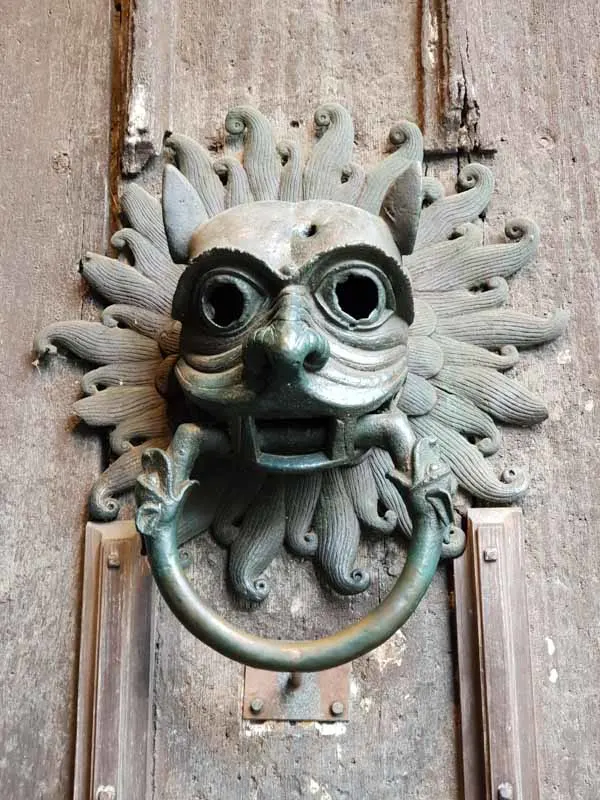
Do check out the infamous knocker on the north door. Those who hammered on the ‘Sanctuary Knocker’ could claim sanctuary. Usually people who’d committed a crime like murder in self-defence or escaping from prison would be allowed 37 days of sanctuary within the Cathedral. During this time they could plan their escape or make amends with their accusers. The original knocker is displayed in the Cathedral Treasures exhibit.
The Cathedral Clock
Durham Cathedral’s clock was installed in 1632 and its unusual design stems from when the clock had a single hand which moved around 48 quarter-hour divisions. However the original case didn’t appeal to Victorian tastes, so it was removed in 1845 and the clock face was mounted directly on the cathedral wall. Fortunately for us, the case was placed in storage in the upper levels of the Cathedral and the Friends of Durham Cathedral restored the clock to its former glory in 1938.
Harry Potter and Durham Cathedral
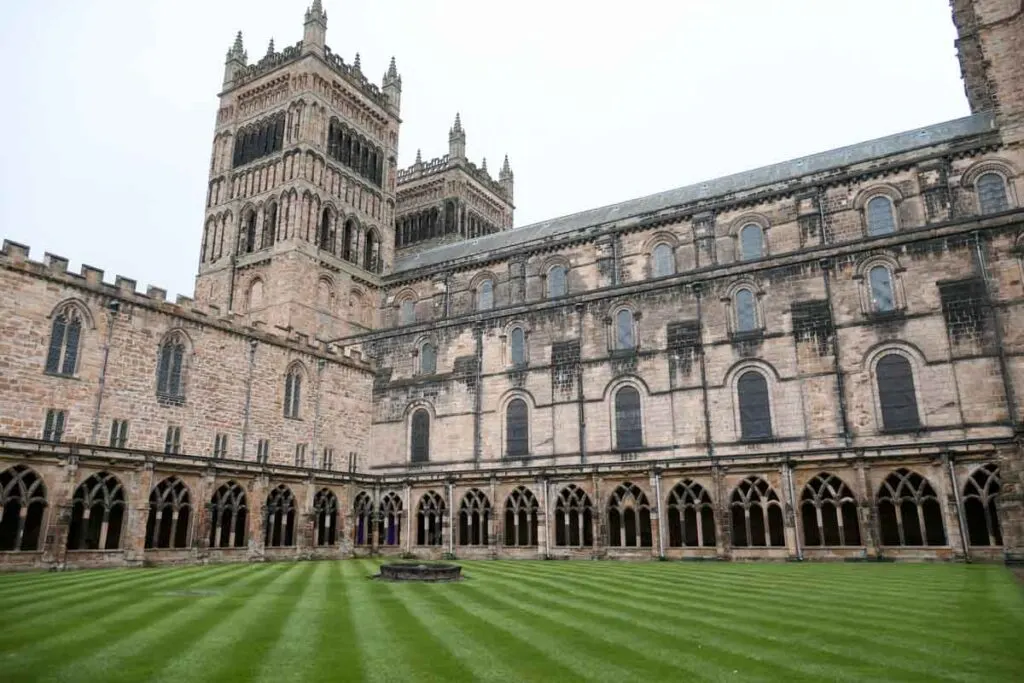
If there’s something vaguely familiar about the impressive architecture of Durham Cathedral, Harry Potter fans might recognise it as playing the part of Hogwarts school in the films. A visit the cloisters is one of the best things to do in Durham for Potter geeks.
Walk in the footsteps of Harry, Hermione and Ron through the Cathedral’s cloisters where Harry flies Hedwig in his first year at Hogwarts.
A visit to the Chapter House which served as Professor McGonagall’s classroom for transfiguration lessons can only be visited as part of a Cathedral tour.
Durham Cathedral’s Galilee Chapel also features in Marvel’s Avengers: Endgame and the Cathedral was used in the Cate Blanchett film Elizabeth.
Take in the views from Durham Cathedral’s rooftop
If you’re up for some exercise climb the 325 stone steps up a narrow winding staircase to the Cathedral’s roof. On a clear day you’ll be rewarded with spectacular views over Durham. We weren’t so lucky but we definitely earned our tea and cake in The Undercroft, Cathedral café.
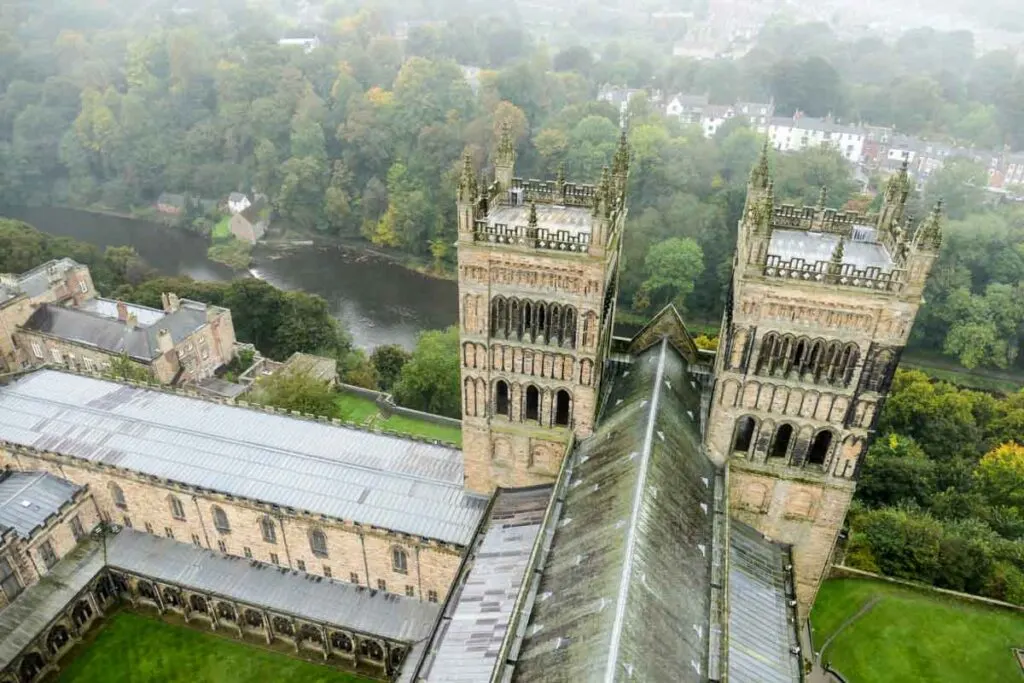
Market Place
Market Place is also lined with some ancient buildings which look like they could be the setting for a Dickensian novel. Check out Market Tavern and Neptune’s statue. Nearby Market Hall is home to 40 independent traders. You can find just about everything for sale here. There’s also a weekly outdoor market and evening street food markets.
Explore Durham’s alleyways and side streets
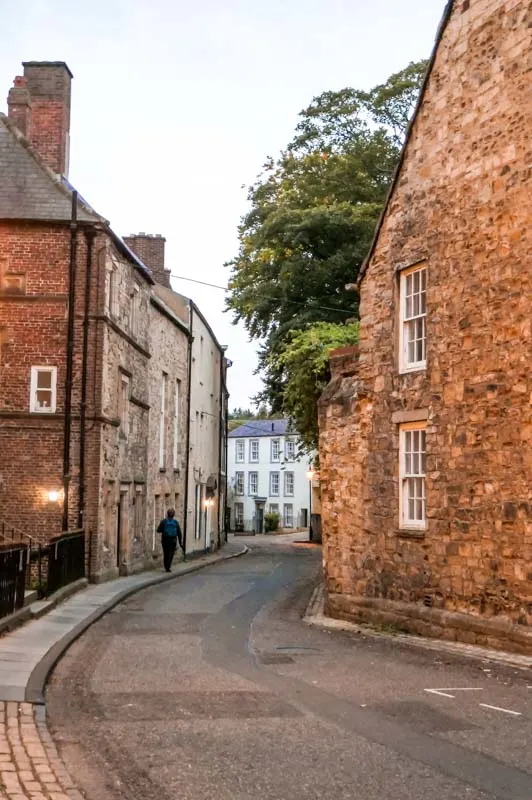
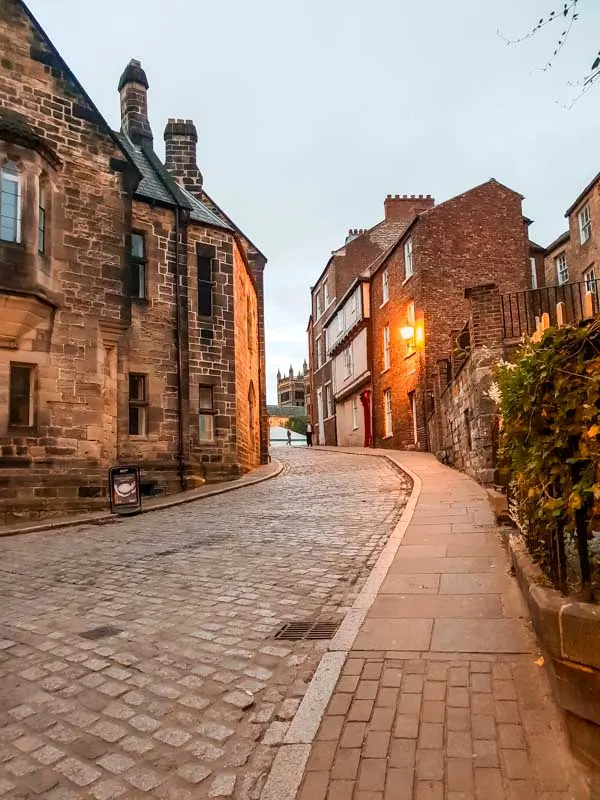
Discover the quaint lanes around the Cathedral grounds and Cathedral Green which are lined with small cottages and dwellings which are where many of the University’s lectures take place. North and South Bailey have many hidden alleyways, courtyards and pretty gardens. Nearby you’ll find one or two entrances to Durham’s river and the walking path that runs alongside it.
If you like England’s charming medieval towns then you need to plan a Weekend Break in Warwick.
Durham’s Riverside Walk
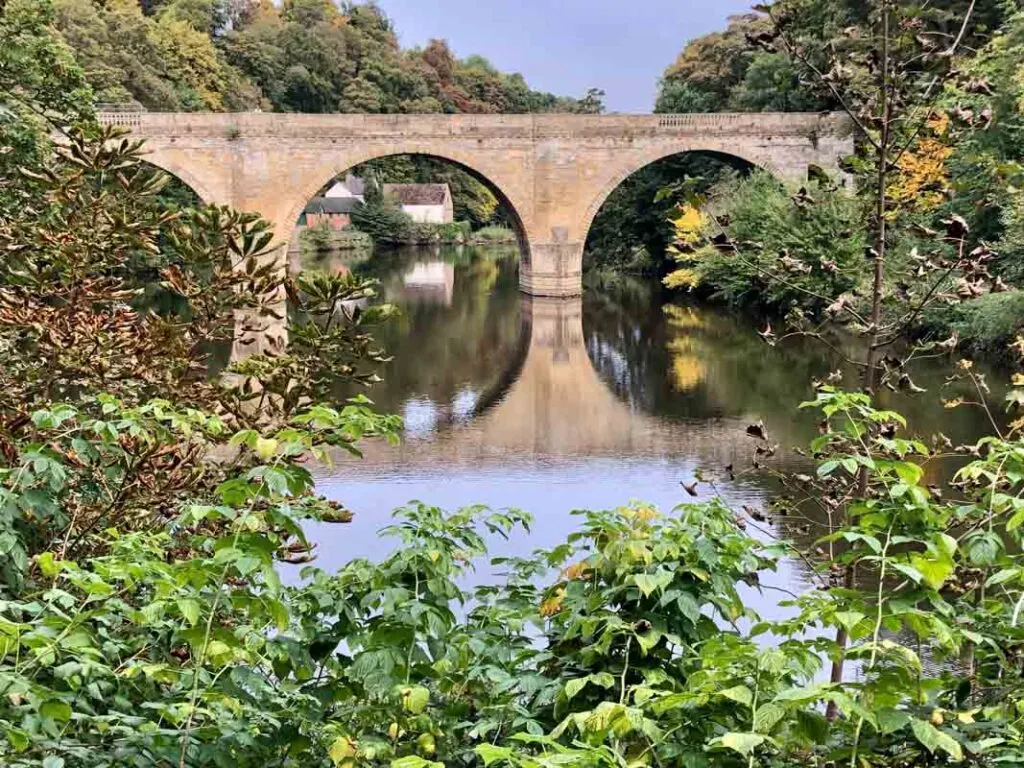
Durham Riverside walk is accessed from many points in the city and will lead you on a 3-mile circular trail following the River Wear around the Cathedral. The walk takes 1-1.5 hours or more depending on how many stops you make because there’s lots to see on the route.
In places you wouldn’t think you were in the city at all because the walk passes through peaceful areas of woodland where all you can hear are the leaves rustling, birdsong and the sound of the river. Some of the best views of the Cathedral can be seen on the river walk and there are some pretty bridges to cross.
If you fancy taking a boat out on the River Wear, head to Elvet Bridge where you’ll find boats for hire.
Durham Castle
Durham Castle is the second UNESCO World Heritage site in Durham city centre. However, it is now home to Durham University and visiting is only possible by taking a tour. However, they cost less than £5 and can be booked online.
I’d have loved to have visited but we were on a tight schedule so didn’t have time for the castle, and it was term time, but you can read more about it on the This is Durham website.
Where to eat in Durham city centre
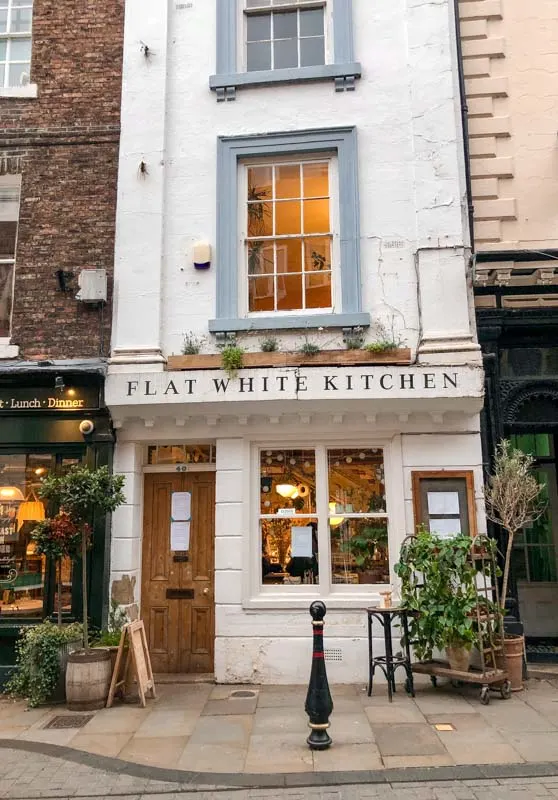
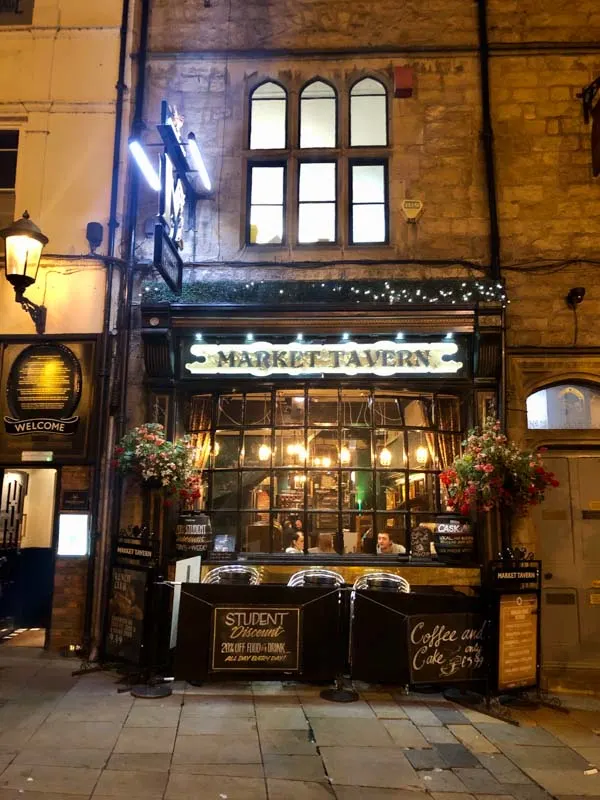
We were in Durham for just one night and had a really good and reasonably priced meal at Shaheen’s Indian but there are plenty of other places to eat in Durham city centre which looked busy and popular. Always a good sign. Zen was recommended if you like Thai food but there are plenty of pubs serving food, fish and chip shops and you can always pick up some food at Market Hall during the day.
Lunch at the Cathedral café, The Undercroft, is a good bet and there were often queues for breakfast outside Flat White. I was up so early it hadn’t opened when I took this photo but apparently it’s as pretty inside as out and the coffee and food is excellent.
Things to do in County Durham – outside the city
Bowes Museum

The The Bowes Museum is one of the finest museums in County Durham and home to arguably the greatest collection of art in the North of England together with collections of ceramics, textiles, furniture and design pieces. A visit to Bowes is one of the best things to do in County Durham and I absolutely loved our day spent there.
The museum stands in the historic and picturesque town of Barnard Castle, 25-miles South West of the city of Durham. The beautiful chateau styled building was built in the 1800s by John and Joséphine Bowes. John Bowes was the son of the 10th Earl of Strathmore, whose mother married his father just hours before his death. Following a lengthy court battle, John received his father’s Durham estates but not his title.
The museum has a wonderful love story behind it which makes a visit all the more special. While working in Paris, John met the French actress Joséphine Coffin-Chevallier, who became his wife in 1852. Together they conceived the idea of creating a world-class museum which would bring the world of art to the population of County Durham. They immediately began collecting.
Work commenced on the museum in 1869, which is designed to look like a grand French chateau. By the time Joséphine died in 1874, around 15,000 objects had been purchased for the museum. John Bowes died in 1885 but the museum that he and his wife dreamt of finally opened in 1892, attracting around 63,000 visitors in its first year. Sadly, neither of them saw its completion.


Today, visitors to the Bowes Museum can enjoy a fine arts collection including paintings by Goya and Canaletto, a superb Fashion and Textiles Gallery and a stunning 240-year old Silver Swan. This life-sized animatronic was bought by the Bowes in 1872 and is still operated daily. It’s well worth timing your visit to see it in flow at 2pm each day, it really is something special. The Bowes museum also features a diverse programme of exhibitions and works on loan from other museums and galleries.
The grounds of the museum contain acres of parkland which are perfect for a picnic, together with a family play area to entertain younger visitors. Or you can treat yourself to brunch, homemade cakes or afternoon tea made with locally sourced ingredients in Café Bowes. Our lunch there was excellent. You could easily spend a day exploring the exhibits at Bowes Museum so give yourself plenty of time for your visit.
High Force Waterfall
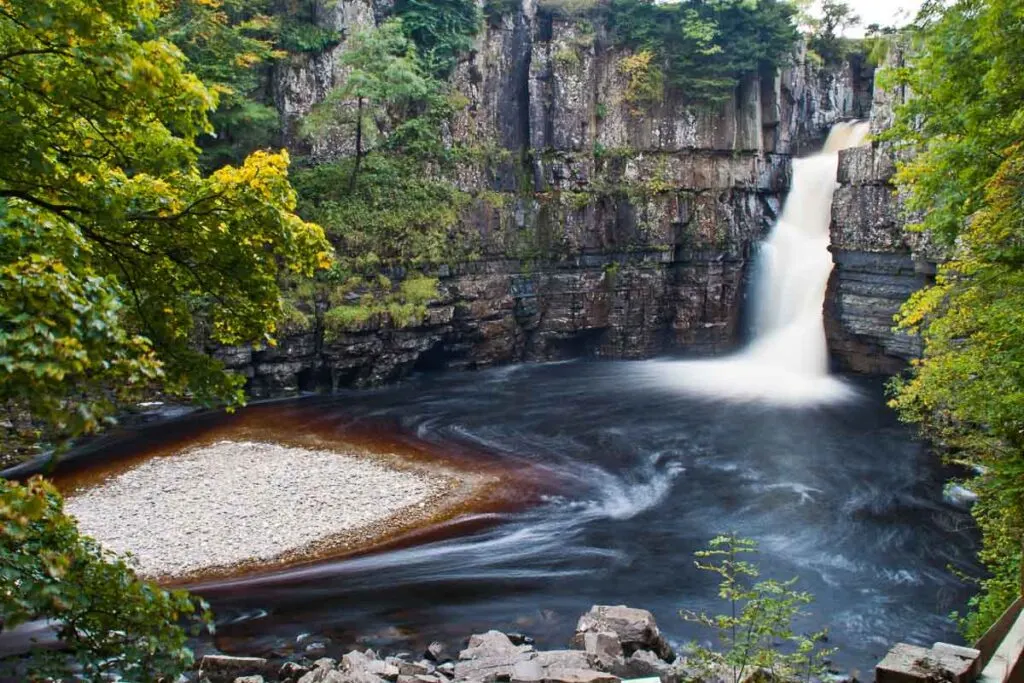
If you’re keen to get some fresh air and head out on some County Durham walks, you will definitely enjoy a visit to High Force Waterfall. It’s one of the most spectacular waterfalls in England and certainly one of the most dramatic sights in County Durham. And after all, who doesn’t love a waterfall…
This breathtaking 21-metre waterfall lies in the heart of the North Pennines Area of Outstanding Natural Beauty and has been shaped by water over thousands of years. The River Tees starts as a tiny trickle in the North Pennines and gradually grows in size and speed, carving its pathway through the rocks to the High Force waterfall at Forest-in-Teesdale.
Your journey to High Force waterfall can be made two ways and either way you’ll hear the falls before you see them. If you fancy a hike then embark on a 5-mile walk circular route from Bowlees car park taking in parts of the Penine way en route. If you take this route parking is free and you’ll view the waterfall from above.
The second way is a short ramble from High Force car park (which you’ll need to pay for) on waymarked paths through the surrounding woodland. On this route you’ll be able to enjoy views of the falls and appreciate the full force from the base of the waterfall. Whichever route you decide on there’s a wide range of flora and fauna including wildflowers, towering trees and even roe deer to be seen.
High Force is worth visiting at any time of year, but if you’re visiting County Durham in the winter months, you’re likely to see the waterfall at its most powerful. If the weather has been cold enough when you visit, you may even find that the waterfall has frozen over.
Low Force Waterfall
Once you’ve visited High Force waterfall, continue along the circular route following the River Tees a little further downstream. Here you’ll encounter the smaller, but still beautiful, Low Force Waterfall. Low force flows over Whin Sill which is made up of igneous rock formed over 295 million years ago. The journey between the two falls will take you around 5 minutes by car or 30 minutes on foot along the Pennine Way footpath.
The Durham Dales is home to a wealth of landscapes, walking trails, hikes and cycling routes which includes Killhope Cross, England’s highest A Road.
Hamsterley Forest

Hamsterley Forest is County Durham’s largest forest, covering more than 2000 hectares. The picturesque woodland stretches along the slopes of a sheltered valley, with leisure activities to suit visitors of any age and every energy level.
The forest was planted and managed in the 1930s by workers supplied by the Ministry of Labour, and the wooden huts where they lived can still be seen around the visitor centre. These days, Hamsterley is a beautiful place to relax and enjoy activities from stargazing to horse riding.
Mountain bike trails traverse the forest, with different difficulties ranging from moderate to expert level. If you would prefer to explore the forest on horseback, there are two trails that wind through the quieter areas of the forest or you can go off-trail to explore the rest of the forest.
If you prefer something a little less energetic, a network of trails and pathways offer the opportunity to explore Hamsterley on foot, while the wellbeing trail guides you on a relaxing mindfulness walk through the forest. Maybe try a spot of forest bathing while you’re there.
Younger visitors can hunt for characters from Julia Donaldson’s ‘The Gruffalo’ on the Hamsterley Forest Gruffalo trail and geocaching at Hamsterley Forest is a fun treasure hunt activity for visitors of all ages.
Hamsterley Forest is run by the Forestry Commission. Recreational activities are focused on the eastern end of the forest, around the visitor centre.
Durham Heritage Coast
The coastline from Sunderland to Hartlepool, which was once an area of heavy industry, has, over the years, been reclaimed by nature and returned to its natural beauty and awarded Heritage Coast Status.
Durham Heritage Coast makes for a craggy seascape perfect for bracing coastal walks and wildlife watching opportunities. There are 11-miles of hikes along the England Coast Path National Trail. This area of coast faces the North Sea and is lined with dramatic limestone cliffs and spectacular promontories like Noses Point and remote beaches like Shippersea Bay.
Seaham, County Durham
Stop off at Seaham, home to the county’s one and only marina, to hunt for some of its world-famous multi-coloured sea glass.
Durham’s beautiful coastline is home to the county’s only marina at Seaham. It’s one of the county’s best coastal locations and is as wild and rugged as you’d expect from its location overlooking the North Sea. This also gives you the perfect excuse to visit a nearby pub for a warming lunch after your walk and maybe even something stronger.
Seaham Beach
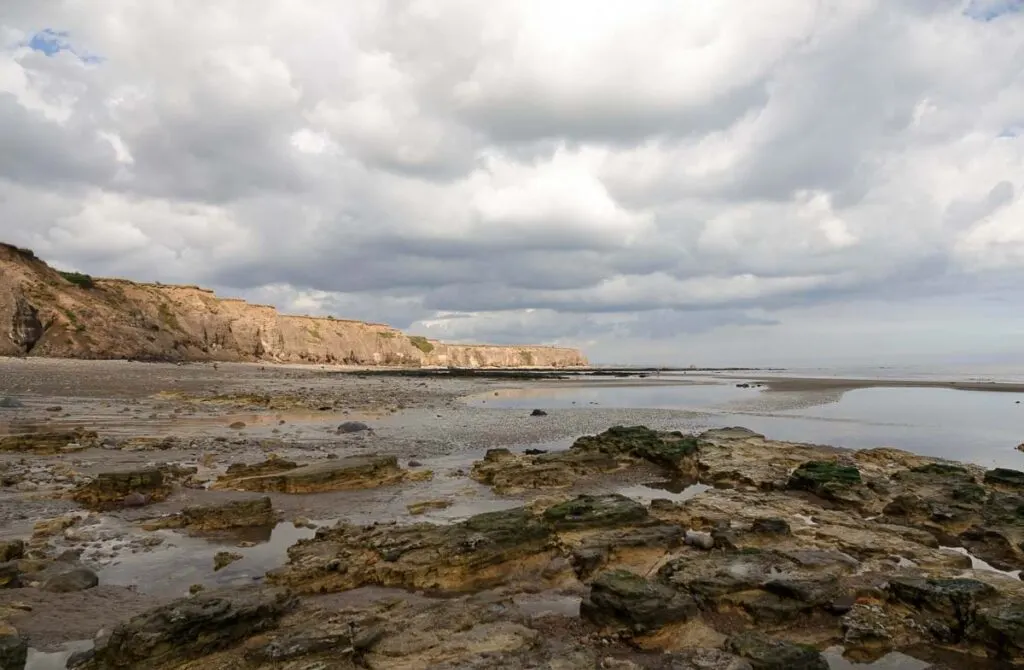
Seaham Beach is a lovely sandy beach that stretches around half a mile north of the town. Seaham seafront is overlooked by Seaham Hall, which was once home to Lord Byron and his heiress bride Anne Milbanke. Seaham Hall was later sold to Charles William Vane, who oversaw the development of Seaham harbour and the nearby town.
The Church of St Mary the Virgin is nearby and has an Anglo-Saxon nave dated to the late-600s, which counts it amongst the 20 oldest churches in the UK. But most people visit Seaham Beach for the glass.
Seaham Glass
The Seaham area was one of the UK’s biggest producers of glass until the 1920s and for decades, waste glass was often simply dumped at sea. Each rising tide brought the shards of glass tumbling back onto the shoreline and over time they’ve become shaped and polished into smooth, multicoloured pebbles.
This stretch of the County Durham coast has become a popular destination for sea glass collectors, who travel from as far away as Alaska and Australia in the hunt for polished glass stones. Of course, wherever you go sea glass hunting, remember to check the Seaham tide times before you set out.
Seaham Glass Beach is probably the most popular place to go sea glass hunting, but you may also like to pay a visit to Blast Beach and North Beach with its breakwater and rock pools. All are part of the Durham Heritage Coast trail.
Where to stay in the city of Durham
For your time in the city of Durham I can recommend staying at Durham Radisson Blu which is where we stayed. It’s in a good location and just a short stroll to the city’s top sightseeing spots like Durham Cathedral, the castle and the old town.
Rooms are spacious and comfortable with some overlooking the River Wear. The hotels serves a good breakfast and there’s an indoor swimming pool, fitness centre and spa. The railway station is about a 20-minute walk from the hotel although much of it is uphill so a taxi might be a good move.
Check rates and availability at Durham Radisson Blu
When the university closes for holidays you can book yourself a room at Durham Castle for a very reasonable sum, probably half the amount that a hotel stay would cost. Great if you’re on a budget and you like staying in castles.
Hotels in County Durham
Headlam Hall Country Hotel and Spa
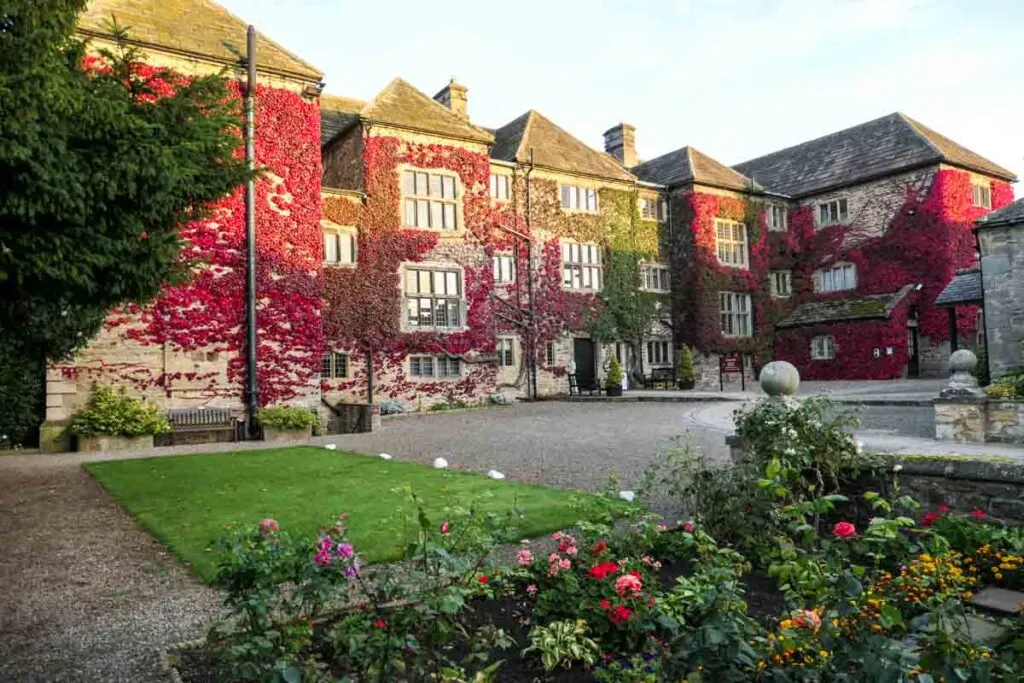
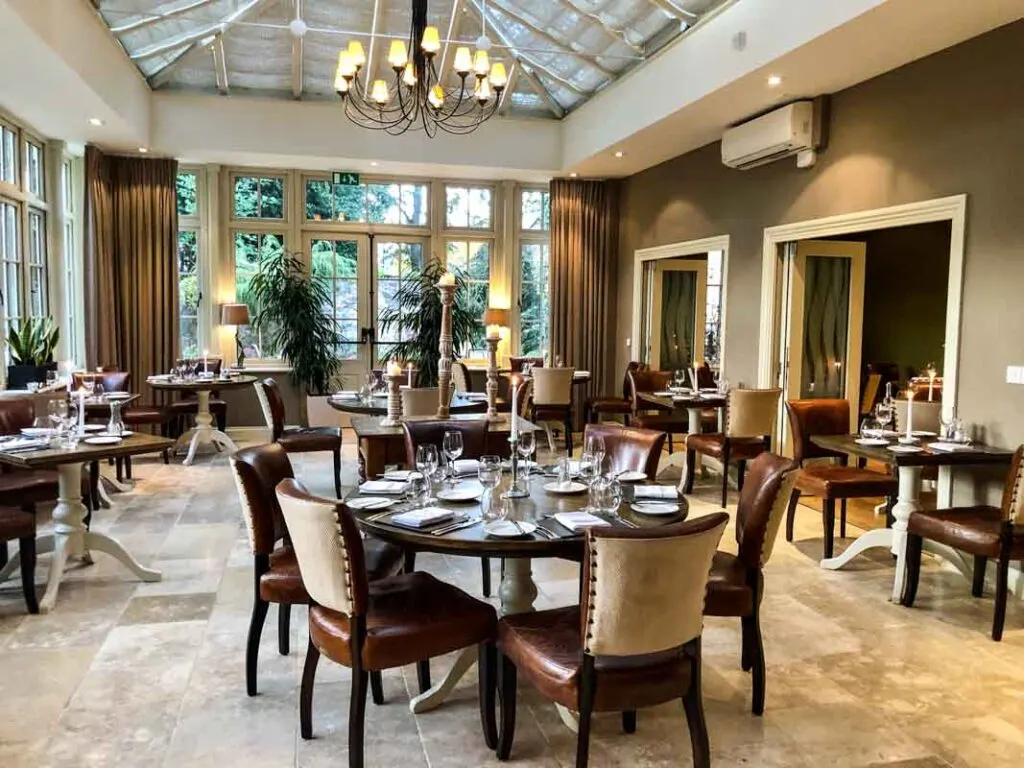


We stayed at country hotel, Headlam Hall, on the fringes of the Durham Dales for the countryside part of our visit. This gorgeous 17th century manor house is set in beautiful grounds with a golf course, tennis courts and fabulous spa. You can book yourself a treatment or just make use the indoor pool and hot tub and other spa facilities.
Headlam Hall is in the perfect location for exploring Co Durham’s countryside and is just 9-miles from Bowes Museum and Barnard Castle, 15-miles from Hamsterley Forest and 20-miles from High Force waterfall. You’ll need a car to see as much as possible during your stay.
Bedrooms are comfortable and well-appointed and you’ll find everything you need for a relaxing rural escape.
The dining room offers an a la carte dinner menu, cream teas and the English breakfast is spot on and the staff are welcoming and helpful. Headlam Hall is perfect to set you up for a day of forest rambles, waterfalls and museums.
A stay at Headlam Hall makes a wonderful and relaxing contrast to the Durham city break on your visit to County Durham.
Headlam Hall Country Hotel and Spa, Headlam, Darlington DL2 3HA
How to get to County Durham
By Train
From London travel to Co Durham is a doddle by train with LNER. If you leave London before breakfast you’ll be in Durham in time for lunch. The journey is under hours.
Many of the UK’s larger cities are connected to the north east by train including Edinburgh, Leeds and London. Check The Trainline for timetables and costs.
Durham is only a 15 minute train ride from Newcastle Central Station so it would make sense to make this a two-centre break.
By Road
If you’re driving timings will depend on a number for factors. Where you’re travelling from, time of day and density of traffic etc. but generally it’s around five hours from London. Having a car will make your visit so much easier and you’ll make better use of your time.
Events in Durham
Don’t miss the famous bi-annual Lumiere Durham in November. The UK’s largest light festival lights up Durham city centre with spectacular light installations.
So, those are my favourite things to do in County Durham. Of course there are some I’ve missed but I’ll be adding them after my next visit because I’m definitely going back! Have you been? What are your recommendations for activities in County Durham?

Suzanne Jones is a full-time travel blogger and writer at The Travelbunny which she started in 2011 during her time as a professional travel planner. Suzanne enjoys exploring new destinations, culinary encounters and the outdoors. When not travelling or writing about her adventures you’ll most likely find her, camera in hand, enjoying coastal walks in Sussex.
Suzanne also runs Hello Sussex a website which showcases the best of East & West Sussex. Read more about Suzanne.

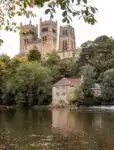



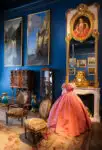

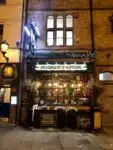

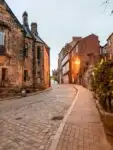
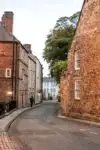


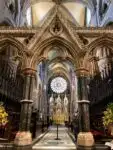
Lucy
Sunday 26th of June 2022
I very nearly went to university in Durham, and the interview was the only time I've been up there, but looks like I definitely need to make another trip sometime!
Suzanne Jones
Sunday 26th of June 2022
Durham's loss!